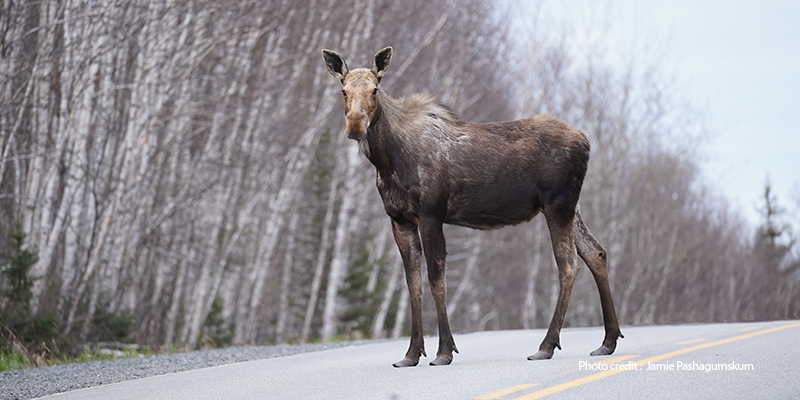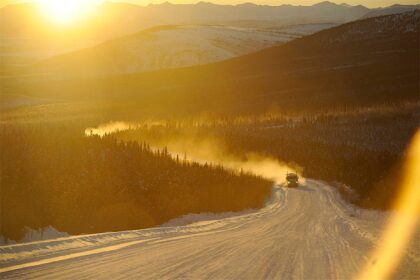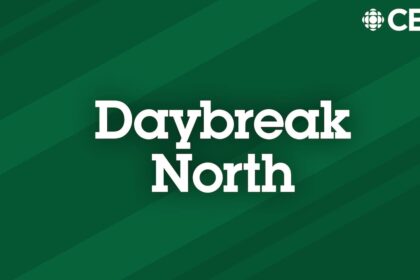The Cree Trappers’ Association presented new Moose Management Guidelines for Zone 17 in Eeyou Istchee during the AGA in Ouje-Bougoumou in August. The new procedures include a hunting permit system, a permission form and promotes a voluntary harvest limit of two moose per trapline. CTA Environmental Manager Stephanie Varty presented the program to remind hunters of the new procedures within affected traplines, including some in Ouje-Bougoumou, Waswanipi and Waskaganish territories. “This is intended to be a temporary measure until the next aerial survey of the moose population,” Varty explained. Concerns for the moose population began in 2021 when studies showed a 35% decline over a 12-year period. At the time of the previous survey in 2009, the number of moose in the area was well over 1,500. Over the following 12 years, Cree hunters noticed dwindling populations. This meant hunts became more difficult and less productive, and harvesting needs were not being met. The population had dropped to 1036 moose. Surveys are led by the Quebec ministry but those conducted in Eeyou Istchee are done in partnership with the Cree Nation Government and the CTA. Reasons for the decline include practices of both Cree and Jamésien hunters, an increase in predators and forestry activities. Varty says all players involved, including non-Indigenous hunters and government officials, want what is best for the moose. Unfortunately, the main obstacle now is budget cuts. “Aerial surveys for populations cost hundreds of thousands of dollars and Quebec is not always able to do them as often as we would like,” said Varty, who is sceptical that surveys scheduled for this winter will take place. “That information is super important because we want to know if the measures we are taking are working or if we need to pivot,” he added. Another concern is that the last studies were done before the devastating forest fires of 2023. “We have some idea of the impacts of the forest fires, but we don’t know for sure,” said Varty. “Having that an aerial survey is important for getting new and updated information.” The new moose management plan was scheduled for implementation in 2024, but was not ready by moose season, so the launch was postponed to this year. The new plan will include a permission form to be filled out by hunters which would give them authorization to hunt under the conditions of the tallymen. The forms are submitted to the local CTA, and the second step is the issuing of tags. The CNG wildlife department conducted a series of interviews in 2023 with tallymen from the affected zone to verify what they were seeing with moose populations and if reducing hunting practices would help. “The responses from the tallymen weren’t unanimous,” said Varty. “But most felt it was reasonable to limit the harvest of moose to only what you need and to share it with family and hopefully let the moose population recover.” There were even discussions on implementing a moratorium on moose hunting in the area. “People said no because they thought it would promote unsafe practices, and they felt that it would interrupt the passing of moose harvesting knowledge,” Varty said. The current solution attempts to balance limiting of the moose hunt with traditional harvesting customs. It was determined that a sustainable harvest level would be 10%, which works out to 104 moose per season for affected traplines. Decisions are made through the Hunting, Fishing and Trapping Coordinating Committee (HFTCC) which consists of representatives from the federal and provincial governments, the Inuit of Nunavik and the Cree and Naskapi Nations. The CTA hired Big Game Coordinators in the communities of Ouje-Bougaumau and Waswanipi to monitor the program and distribute information to the public. Varty says one challenge in the Cree Nation is that everyone believes in conservation but there are different opinions on how that should be done. For example, although everyone accepts the need to reduce harvesting, not everyone consents to implementing limits. One thing everyone agrees on is that Crees should have priority over non-Indigenous hunters. As has been the case since 2021, non-Indigenous hunters are again excluded from this year’s moose hunt. That decision comes from the HFTCC and stems from the James Bay and Northern Quebec Agreement, which assures the Crees a guaranteed harvest. The current limit of 104 moose per season falls short of that guaranteed harvest. By default, the entire harvest is allocated to the Cree. A complaint form has been developed, and the public is encouraged to use it to voice any concerns they have such as harvesting issues, poaching and unsafe hunting practices. Because of the large territory, complaint forms will give authorities information they need to follow up on incidents and forms will be available with the Big Game Coordinators. Complaints will be handled by the local CTA, the Eeyou Istchee Land Keeper / Wildlife Protection Assistants as well as game wardens and the SQ for more serious cases. There is also the CTA app which is available for the public and a provincial poaching hotline.
Monday, 22 Dec 2025
Canada – The Illusion
Search
Have an existing account?
Sign In
© 2022 Foxiz News Network. Ruby Design Company. All Rights Reserved.
You May also Like
- More News:
- history
- Standing Bear Network
- John Gonzalez
- ᐊᔭᐦᑊ ayahp — It happened
- Creation
- Beneath the Water
- Olympic gold medal
- Jim Thorpe
- type O blood
- the bringer of life
- Raven
- Wás’agi
- NoiseCat
- 'Sugarcane'
- The rivers still sing
- ᑲᓂᐸᐏᐟ ᒪᐢᑿ
- ᐅᑳᐤ okâw — We remember
- ᐊᓂᓈᐯᐃᐧᐣ aninâpêwin — Truth
- This is what it means to be human.
- Nokoma











